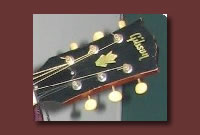The other day I was reading Dogette’s site, which for years has become a regular part of my day. I noticed that she blogged about her web host having upgraded her account to include multiple MySQLs.
I thought, “Yo, Jimbo. What is this SQL thing? If hosting services are offering multiples of them, it must be some good shit.”
I’ve made no secret of my technodoofustry, but my intellectual curiosity remains intact, particularly when I come across something that strikes Dogette as being more blogworthy than dogshit or her continuing squirrel jihad.
So, I popped up Google and figured that, within a minute or two, I would be able to hang with the Geeks of the World and talk some serious SQL Shit.
Here’s what I learned.
SQL (Structured Query Language) is a standard interactive and programming language for getting information from and updating a database. Although SQL is both an ANSI and an ISO standard, many database products support SQL with proprietary extensions to the standard language. Queries take the form of a command language that lets you select, insert, update, find out the location of data, and so forth. There is also a programming interface.
huh?
SQLis a computer language designed for the retrieval and management of data in relational database management systems, database schema creation and modification, and database object access control management.
say what?
An industry-standard language for creating, updating and, querying {relational database management systems}. SQL was developed by {IBM} in the 1970s for use in {System R}. It is the {de facto standard} as well as being an {ISO} and {ANSI} {standard}. It is often embedded in general purpose programming languages. The first SQL standard, in 1986, provided basic language constructs for defining and manipulating {tables} of data; a revision in 1989 added language extensions for {referential integrity} and generalised {integrity} {constraints}. Another revision in 1992 provided facilities for {schema} manipulation and {data administration}, as well as substantial enhancements for data definition and data manipulation. Development is currently underway to enhance SQL into a computationally complete language for the definition and management of {persistent}, complex objects. This includes: generalisation and specialisation hierarchies, {multiple inheritance}, user defined {data types}, {triggers} and {assertions}, support for {knowledge based systems}, {recursive query expressions}, and additional data administration tools. It also includes the specification of {abstract data types} (ADTs), object identifiers, {methods}, {inheritance}, {polymorphism}, {encapsulation}, and all of the other facilities normally associated with object data management. The emerging {SQL3} standard is expected to be complete in 1998. According to Allen G. Taylor, SQL does _not_ stand for “Structured Query Language”. That, like “SEQUEL” (and its pronunciation /see’kw*l/), was just another unofficial name for a precursor of SQL. However, the IBM SQL Reference manual for DB2 and Craig Mullins’s “DB2 Developer’s Guide” say SQL _does_ stand for “Structured Query Language”. {SQL Standards (http://www.jcc.com/sql_stnd.html)}. {An SQL parser (ftp://ftp.uu.net/published/oreilly/nutshell/lexyacc/)} is described in “Lex & Yacc”, by Levine, Mason & Brown published by O’Reilly. {The 1995 SQL Reunion: People, Projects, and Politics (http://www.mcjones.org/System_R/SQL_Reunion_95/)}. [“A Guide to the SQL Standard”, C.J. Date, A-W 1987]. [“SQL for Dummies”, Allen G. Taylor, IDG Books Worldwide]. (2000-07-07)
ooooooooookay.





